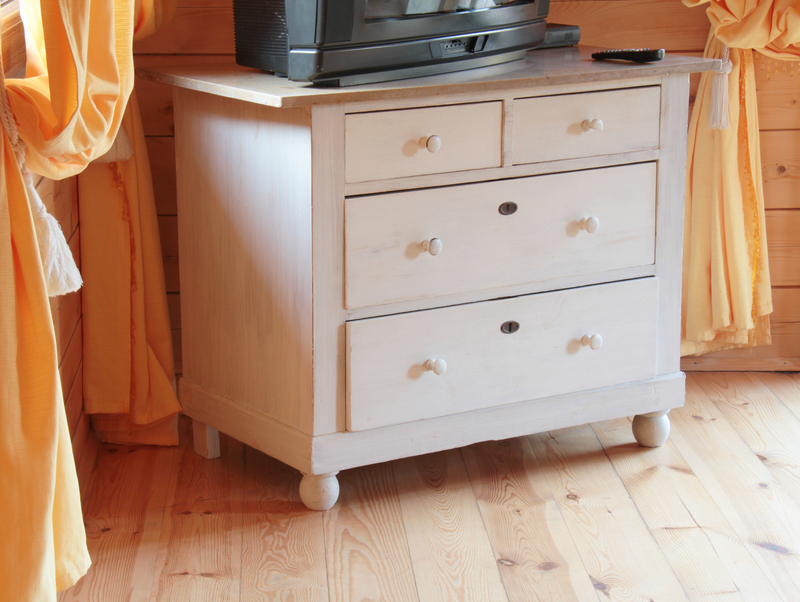Understanding Mini Skips in Waste Management
In today's world, waste management is an essential aspect of maintaining cleanliness, complying with regulations, and promoting environmental sustainability. Among the various waste management solutions, mini skips have gained popularity due to their convenience, versatility, and cost-effectiveness. In this comprehensive guide, we will dive deep into the role of mini skips, their benefits, usage scenarios, sizes, how they compare with other skip types, environmental aspects, hiring tips, and much more.

What Are Mini Skips?
Mini skips are small, open-topped waste containers designed for the temporary storage and removal of modest quantities of trash. Their compact size makes them particularly suitable for domestic projects, small renovations, and garden clearances. With capacities typically ranging from 2 to 4 cubic yards, these skips are an ideal solution when you need to dispose of unwanted materials but do not generate enough waste to require a full-size skip.
Key Features of Mini Skips
- Compact design — easy to position in driveways, gardens, and tight spaces.
- Flexible usage for household, small-scale commercial, and landscaping projects.
- Cost-effective waste disposal option for smaller projects.
- User-friendly with low sides for easy loading.
Why Choose Mini Skips for Waste Removal?
When evaluating waste disposal options, mini skips offer several notable advantages over other waste management methods. Here's why both homeowners and small business owners opt for mini skip hire:
1. Versatility in Application
- Ideal for Various Projects: From spring cleaning and landscaping to bathroom or kitchen renovations, mini skips are suitable for a wide range of small-scale undertakings.
- Perfect for areas where limited space prohibits the use of larger skips.
2. Environmental Benefits
- Encourages responsible waste segregation and recycling. Reputable skip hire companies sort collected waste at approved facilities, diverting recyclable materials from landfill.
- Reduces carbon footprint by minimizing the need for multiple trips to the local waste center or landfill.
3. Cost Efficiency
- Affordable rental rates compared to larger skips or multiple trips to waste disposal sites.
- Pay only for the capacity you need, making it a budget-friendly waste management solution.
4. Convenience and Accessibility
- Easy to load due to their low height.
- Can often fit on private property, reducing permit requirements and potential fines linked to on-street skip placement.
Typical Uses of Mini Skips
Mini skips are extremely versatile, serving both residential and light commercial needs. Below are some of the most common scenarios for mini skip use:
- Home refurbishment: Disposing of tiles, fixtures, and other debris from bathroom or kitchen remodelling.
- Garden clearances: Removing soil, turf, branches, and old garden furniture.
- Spring cleaning: Ideal for getting rid of bulky unwanted items, broken furniture, and household junk.
- Office cleanouts: Mini skips are perfect for confidential document disposal, outdated electronics, and old office furnishings.
Whether you're a homeowner cleaning out your attic or a business managing light commercial waste, mini skips streamline the process, saving both time and effort.
Comparing Mini Skips with Other Skip Sizes
Understanding the difference between mini skips and other types of waste skips can help you select the most appropriate solution for your needs. Here's how mini skips compare with other common skip sizes:
| Skip Size | Capacity (Cubic Yards) | Best For | Suitability for Tight Spaces |
|---|---|---|---|
| Mini Skip | 2-4 | Small domestic projects, garden waste, single-room renovations | Excellent |
| Midi Skip | 4-6 | Medium renovations, kitchen/bathroom refits | Good |
| Builders' Skip | 6-8 | Large construction and extensive home improvements | Poor |
| Large/Maxi Skip | 10-16+ | Major construction work, commercial waste | Poor |
Mini skips stand out for their maneuverability and suitability in urban environments where larger skips cannot be accommodated.
Sizing Guide: How Much Can a Mini Skip Hold?
One of the most frequently asked questions in mini skip hire is about capacity. A standard 2-yard mini skip can typically hold around 20-30 full bin bags, while a 4-yard skip holds up to 40-45 bin bags. This makes them ideal for minor refurbishments, garden clear-outs, or quick disposal jobs.
- 2-yard mini skip: Suited for quick room clearances or small garden projects.
- 3-yard skip: Great for tackling one-off home clutter clear-outs or smoothing small DIY projects.
- 4-yard skip: Offers maximum mini skip capacity for more substantial household jobs.
Note: When estimating skip size, it's better to opt for a slightly larger skip to avoid the hassle and extra cost of hiring a second one.
Accepted and Prohibited Waste in Mini Skips
While mini skips are versatile, not all materials can be thrown into them. It is vital to understand what you can and cannot dispose of in a mini skip for legal and environmental reasons.
What You Can Dispose of in a Mini Skip
- General household waste
- Garden waste (branches, grass clippings, soil)
- Small amounts of builders' waste (tiles, plasterboard, wood)
- Old furniture
- Non-electrical fittings
What Should NOT Be Disposed of in a Mini Skip
- Asbestos
- Batteries and electrical equipment (TVs, refrigerators, etc.)
- Painters' solvents, oils, chemicals
- Tyres
- Gas cylinders
- Medical waste
Always consult with your skip hire provider if you're unsure whether your waste is acceptable.
The Environmental Impact of Mini Skips
Mini skips significantly contribute to responsible waste management. When rubbish is properly segregated and disposed of via mini skips, it often results in:
- Higher recycling rates: Reputable companies sort and process collected waste, reclaiming recyclables like metals, plastics, and paper.
- Reduced landfill usage: Effective waste diversion keeps unnecessary materials out of landfills, reducing greenhouse gas emissions.
- Safer communities: Centralizing waste disposal in skips reduces risks of litter, injury, and contamination.
By choosing a mini skip for your waste disposal needs, you are making a conscious decision to support environmental sustainability.
How Does Mini Skip Hire Work?
Hiring a mini skip is a straightforward process, offering flexibility and peace of mind. Here's an overview of typical steps involved:
- Assess Your Waste Volume: Estimate how much waste you need to dispose of.
- Choose a Trusted Provider: Research local skip companies known for reliability and compliance.
- Book Your Skip: Reserve the skip size and set the delivery date.
- Skip Delivery: Company delivers the mini skip to your specified location, often with instructions regarding placement and usage.
- Load the Skip: Fill the mini skip with your waste, adhering to capacity limits and accepted materials.
- Collection: The provider collects the loaded skip and transports the waste for environmentally responsible disposal or recycling.
Important Considerations When Hiring a Mini Skip
- Permits: If you need to place your mini skip on a public road, a permit from the local council is usually required.
- Skip Placement: Whenever possible, place skips on private property to avoid additional fees and regulatory hurdles.
- Loading: Fill your mini skip sensibly, ensuring that waste does not protrude above the sides. Overfilled skips may refuse to be collected for safety reasons.
- Weight Restrictions: Avoid dense, heavy materials like concrete or soil in excess, as these can easily exceed mini skip weight capacities.
Tips to Maximize Mini Skip Usage
- Break down bulky waste to optimize space and fitting.
- Flatten cardboard boxes and disassemble furniture when possible.
- Place the heaviest and largest items at the bottom to distribute weight evenly.
- Avoid overfilling; keeping the level flush with the skip sides ensures safe transport.
- Sort recyclables separately if your provider offers recycling facilities.
Common Myths and Misconceptions
There are several misconceptions regarding mini skips:
-
Myth: Mini skips are only for domestic use.
Fact: While popular for households, mini skips are also used in light commercial settings. -
Myth: All waste can go in a mini skip.
Fact: There are strict regulations about prohibited materials such as electrical items and hazardous waste. -
Myth: Mini skips are too small for most jobs.
Fact: For minor projects, mini skips often offer just the right amount of waste capacity, saving money and space.

Frequently Asked Questions About Mini Skips
How long can I keep a mini skip?
Most companies offer standard hire periods from one to two weeks. Extensions are typically available upon request.
Can I move the mini skip once delivered?
No. For safety and insurance purposes, mini skips should not be moved after placement.
Do I need a permit to hire a mini skip?
Permits are only required if the skip is placed on public land (e.g., a roadside). Skips on private property do not need permits.
What areas are suitable for skip placement?
Level ground with sufficient space for the delivery lorry and for safe access.
Conclusion: The Role of Mini Skips in Effective Waste Management
Mini skips are an invaluable tool in modern waste management. Compact, accessible, budget-friendly, and environmentally responsible, they serve as the perfect solution for a variety of small-scale waste removal projects. If you're undertaking a project that generates less waste than would fill a traditional builder's skip, a mini skip hire is likely the smartest, most sustainable choice.
By understanding how mini skips work and optimizing their use, you help foster cleaner neighbourhoods, ensure efficient disposal, and support recycling initiatives. The next time you're planning a spring clean, refurbishment, or garden makeover, consider a mini skip — the smart way to manage your waste.